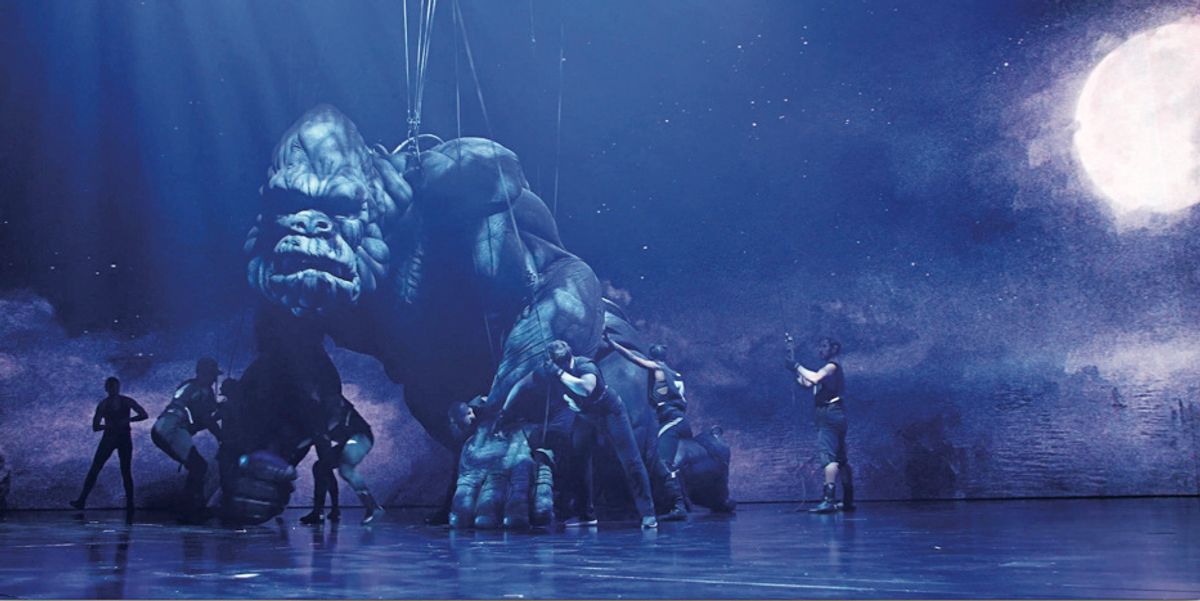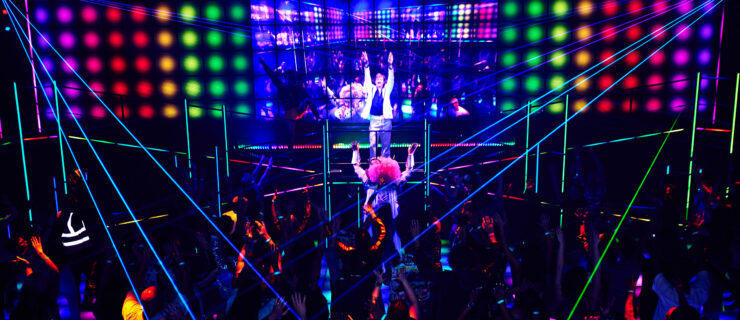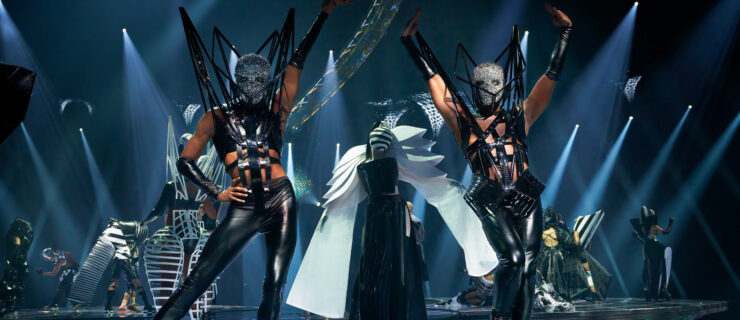How 10 Dancers Bring King Kong to Life on Broadway
One of the biggest attractions on Broadway right now is also literally the biggest attraction on Broadway right now. He’s 20 feet tall, weighs a solid ton, and is operated by 13 performers and 16 microprocessors. His name is Kong—or Kiko, as his team has dubbed him (don’t dare call him a puppet)—and he’s the roaring, bounding, Empire State Building–scaling star of King Kong. His team of creature designers just snagged a Special Tony Award—read on to find out exactly how Kiko roars to jaw-dropping life on the Great White Way eight times a week.

Lauren Yalango-Grant in front of the “King Kong” theater (Christopher Hampton Grant, courtesy Boneau/Bryan-Brown)
A lot of dance goes into bringing Kong to life each night at the Broadway Theatre, from the intricate choreography behind Kiko’s every naturalistic movement to the gifted group of dancers, known as the King’s Company, that makes those movements possible. We talked to associate choreographer Ellenore Scott and King’s Company member Lauren Yalango-Grant about why dance is such an essential part of King Kong’s story.

Photo by Matthew Murphy, courtesy Boneau/Bryan-Brown
Kong’s massive body consists of a steel skeleton, molded-fiberglass shells, and inflatable bags and tubes. Operating his various parts and elaborate rigging requires a combination of dancing, gymnastics, and circus magic.

Photo by Matthew Murphy, courtesy Boneau/Bryan-Brown
“Every member of the King’s Company needs to be acutely perceptive,” Scott says. “It takes at least four people just to create a single arm movement: You have one dancer on the paw, but it can’t move alone, without the shoulder and the elbow. The whole group of dancers is basically breathing as one.”

Joan Marcus, courtesy Boneau/Bryan-Brown
Though King’s Company artists are in plain view onstage, their goal is to animate Kong in a way that makes the audience forget they’re there. “We’re both seen and unseen,” Yalango-Grant says. “We’re always trying to be as ninja-like as possible. And our bodies mimic Kong’s—we’re in a sort of primal stance at all times, with our focus on whatever Kong is looking at.”
Your browser does not support the video tag.
Yalango-Grant, who operates Kong’s right elbow, right foot, and much of his rigging, danced with Pilobolus for eight years before making her Broadway debut in King Kong. (Her husband Christopher Grant, another Pilobolus alum, is a swing for the King’s Company.) “My Pilobolus skills definitely translate, because Pilobolus is very much a group effort—there are no diva or solo moments—and that’s the way it is working with Kong, too,” Yalango-Grant says. “None of us are meant to shine individually. We shine as a group, behind this amazing creature.”

Still from production video, courtesy Boneau/Bryan-Brown
At several points in the show, Yalango-Grant sits atop Kong’s huge shoulders. “When I’m on his back, I feel like Daenerys Targaryen riding my dragon!” she says. “You can’t help but be fully present in a moment like that.”

Still from production video, courtesy Boneau/Bryan-Brown
During an earlier run of the show in Australia, the artists operating Kong were all men, mostly because of the intensely physical nature of the choreography. Yalango-Grant is one of two female members of the King’s Company on Broadway. She did a vigorous course of upper-body strengthening before the show opened “to make sure I could hold my own,” she says, laughing. “I was living in the gym for weeks prior to opening night.”

Still from production video, courtesy Boneau/Bryan-Brown
Thanks to the work of the King’s Company dancers, Kong reads not as an animatronic approximation of an ape, but as a living, breathing being. “From the beginning, he’s never been a puppet. He’s always been an actor in the show,” Scott says. “These dancers are superheroes and rock stars, because they make the audience feel this deep connection to a 2,000-pound gorilla.”
A version of this story appeared in the May/June 2019 issue of
Dance Spirit with the title “The King of Broadway.”




